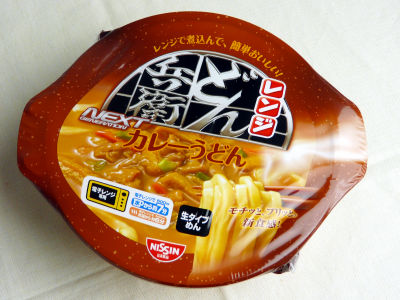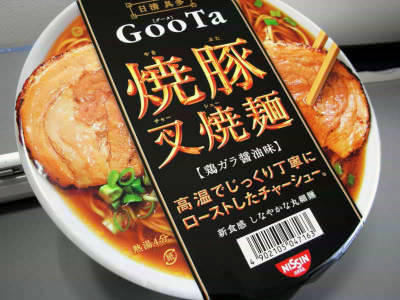I tried to find out the difference between the ultra-low-carbohydrate 'tofu skin' review, which can be used as noodles, and the amazing low-carbohydrate noodles and dried tofu.

The following are two types of frozen tofu skin found at a commercial supermarket. The tofu skin slice was 288 yen excluding tax, and the sheet type tofu skin was 278 yen excluding tax.
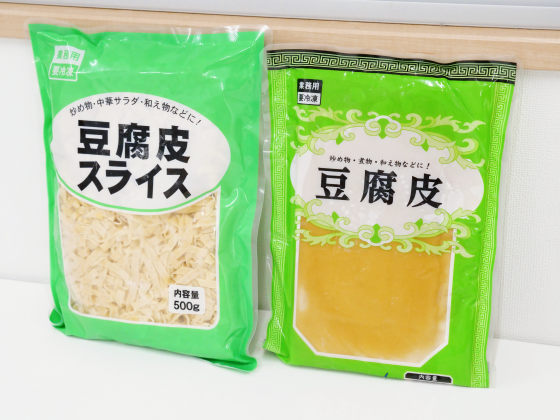
Each has a content of 500g, which is about the size of a hand. Let's start with the tofu skin slices.
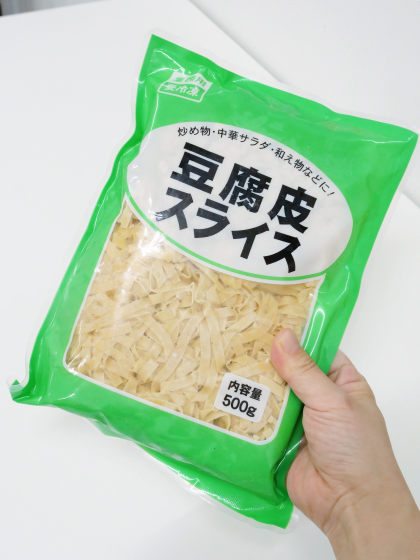
The only raw materials are soybeans and coagulants.
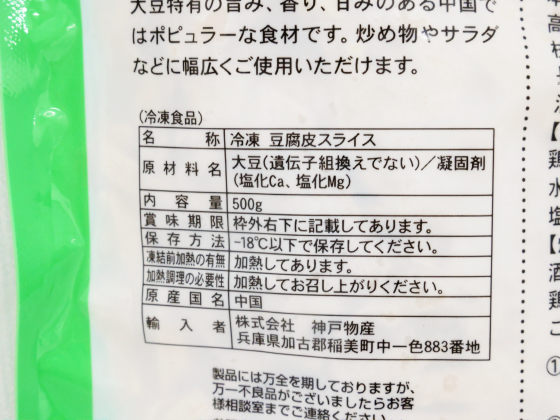
Calories are 198kcal per 100g, protein is 20.3g, fat is 10.8g, and carbohydrate is 5g. The calories per 100g of dried tofu are 159kcal, the protein is 16.3g, the fat is 10.1g, and the carbohydrates are 1.9g, so the calories are a little high and the protein & carbohydrates are a little high.
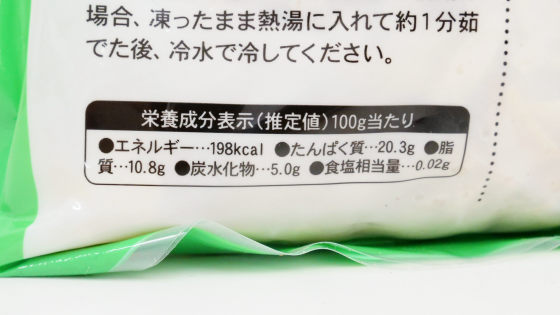
When I take it out of the bag, it looks like this.
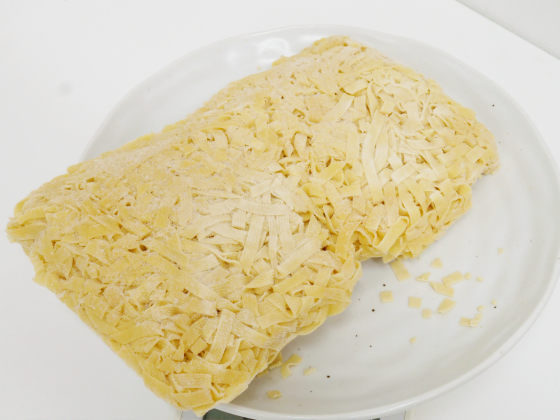
The actual weight was 505g.
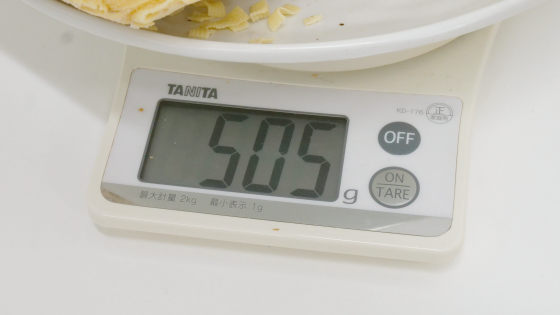
When I approached it, I could see the unevenness of the surface of the ribbon-shaped tofu skin even in the frozen state.

It was frozen, but surprisingly it cracked in two from the center, so it's easy to use only half and freeze the other half. This area is more convenient than dried tofu, which requires thawing work to freeze and decompose.
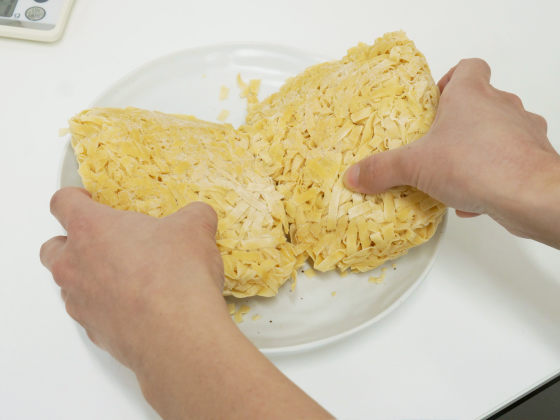
Also, the convenient part of this tofu skin is that it does not require natural thawing or running water thawing, and it is OK just to put it in boiling water and heat it for 1 minute. The ease of preparation before eating is overwhelmingly tofu skin] tofu dried.
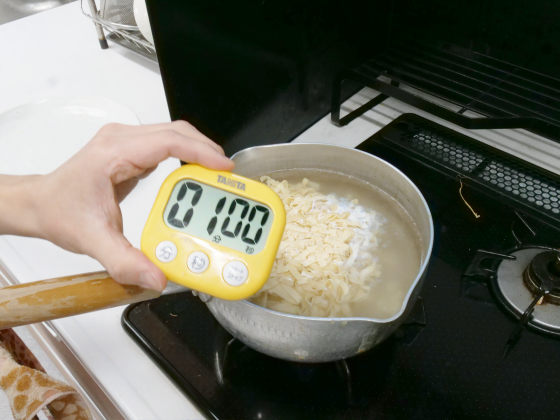
One minute later, the tofu skin taken from the hot water looks like this. It looks like kishimen.
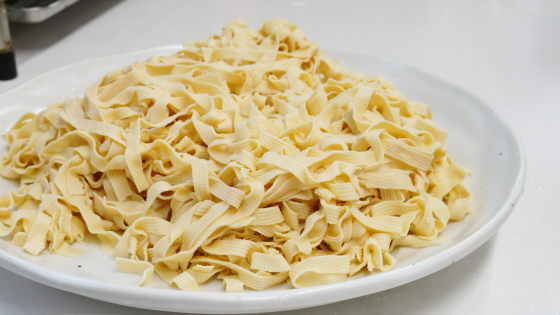
When I first tried eating it without adding anything, the scent of tofu was much stronger than that of dried tofu, and it was so different that the comment 'Is this Yuba?' I thought it was stupid, and when I looked it up on Wikipedia, I found the word 'tofu skin' in the
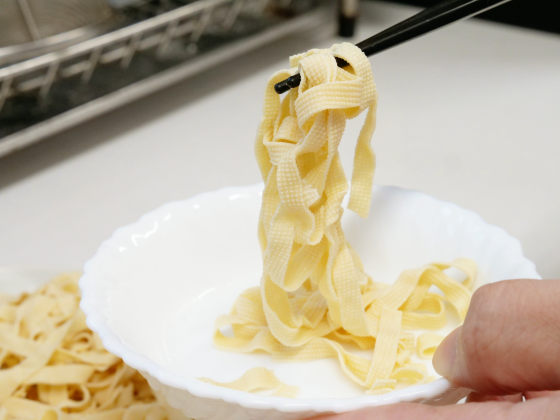
That said, tofu is originally pale, so if you season it with sauce, the aroma of tofu will disappear and you can use it as noodles. I bought pasta sauce.
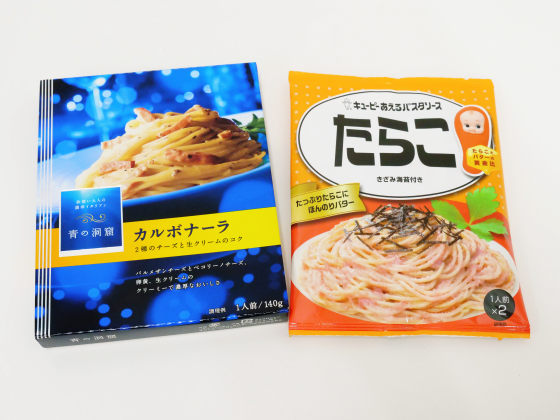
Completed carbonara and cod roe pasta with crispy tofu skin.
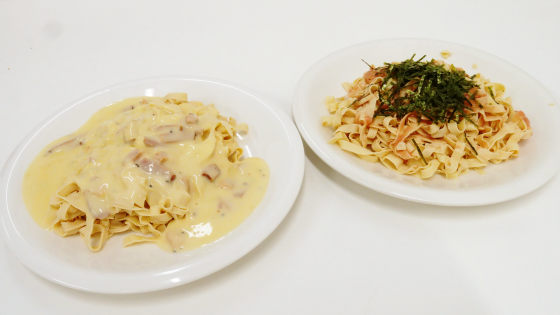
When I actually tried it, the combination of the shape like flat noodles and the unevenness of the surface made it difficult for the noodles to harden and get entangled in the sauce. Also, because it is soft and does not have the stiffness of dried tofu, which is described as 'delicious rubber band,' it is easy to cut and I felt it was a little difficult to eat. However, since the taste is simple, it goes very well with the sauce, and some people said, 'This is delicious.' Compared to dried tofu, it seems to be underestimated, but it does not have a strong smell or a presence that can not be deceived like konjac noodles, so it is quite easy to use and eat as noodles among alternative noodles. ..
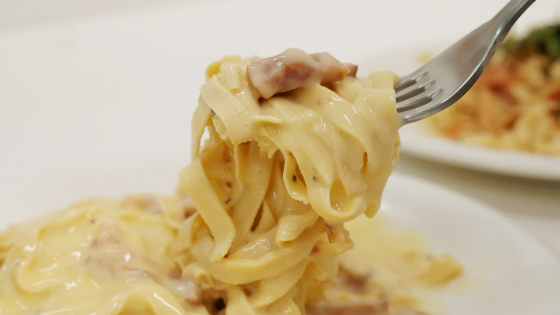
The cod roe pasta is also a real meal.
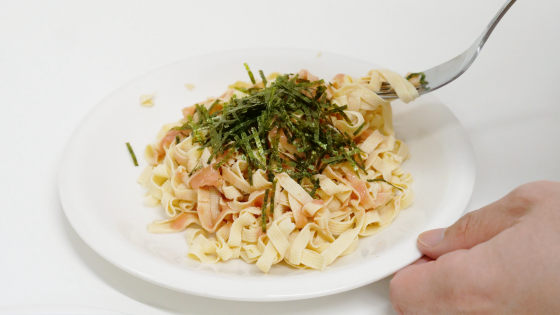
I'm also worried about the difficulty of entwining the sauce, but it should be a taste. However, the tofu skin seems to absorb water considerably, and I was worried about the wateriness, so it is better to drain it well and eat it.
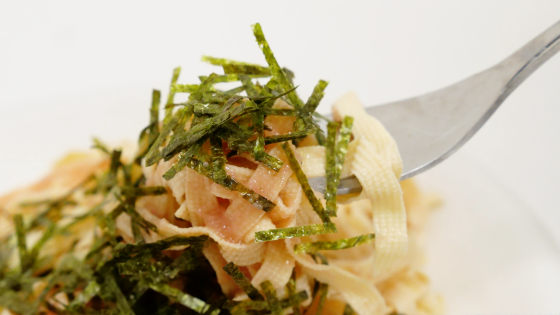
Does this wateriness disappear when stir-fried?
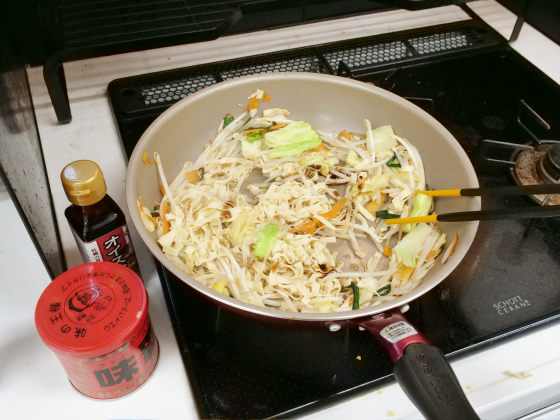
Completed quickly.
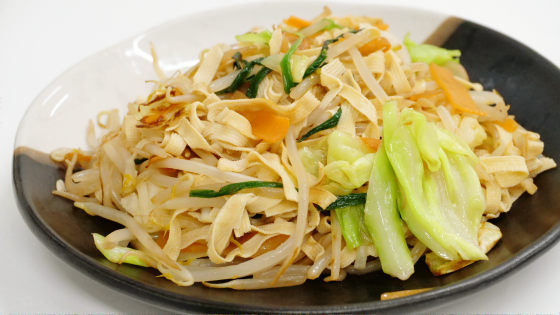
When I tried it, the aroma peculiar to tofu disappeared, there was almost no wateriness, and the degree of perfection as yakisoba was more than pasta. In addition, the unevenness of the surface of the tofu skin creates a unique texture, but the large amount of ingredients drastically reduces the discomfort of the texture. Many people seemed to feel uncomfortable as a substitute noodle for pasta, but it can be used as a very good substitute noodle for yakisoba.
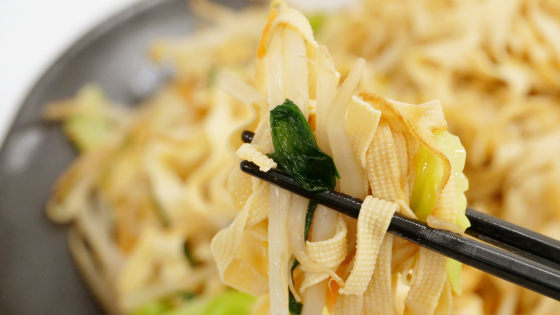
I will also use the sheet version.
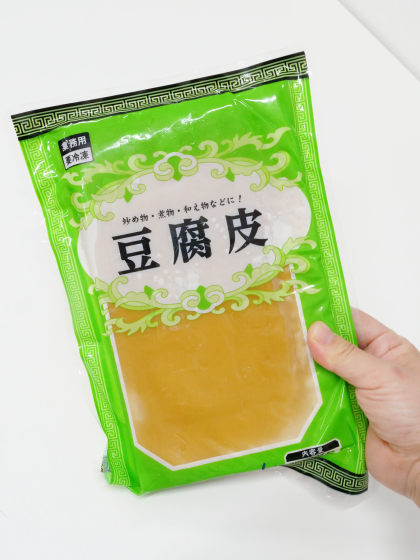
Again, the raw material names are only soybeans and coagulants ...
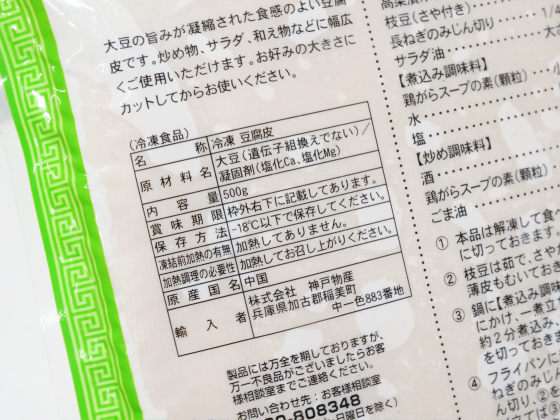
Since the amount of calories, protein, fat and carbohydrate is exactly the same, it seems to be the same as the tofu skin slice but different in shape.

It looks like this when you take it out of the bag.
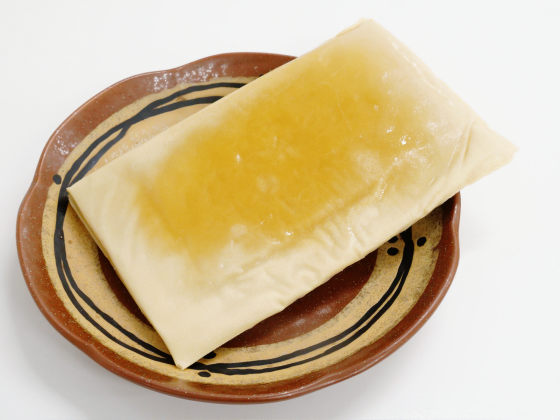
Unlike tofu skin slices, it was frozen and couldn't be broken by hand or cut with a knife ...

Defrost in the defrost mode of the microwave.
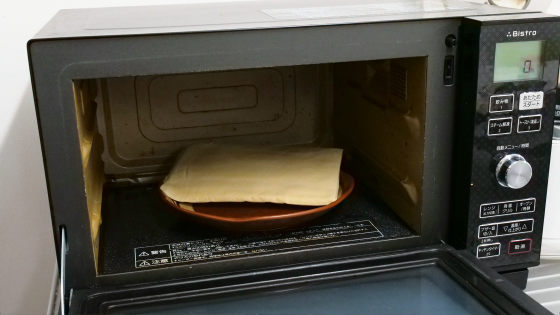
The tofu skin is folded as follows ...

After thawing, it was able to open flutteringly. It could be boiled as it is and used as a spring roll or dumpling skin.
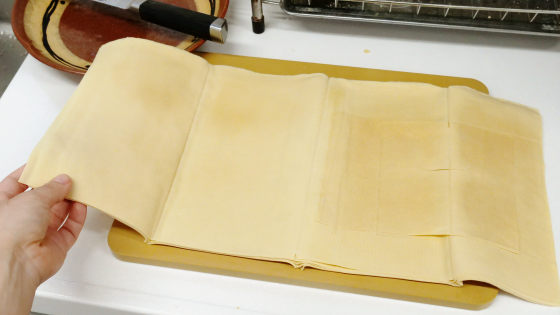
Unlike tofu skin slices, you can make your favorite size in a sheet shape, and you can make thin noodles ...
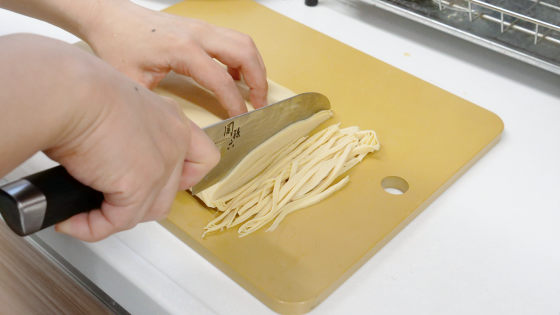
On the contrary, it is OK to use super thick noodles.
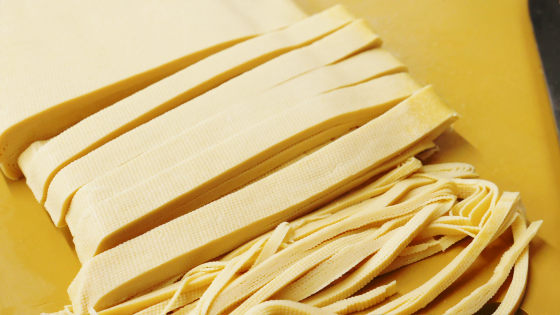
The usage is exactly the same as before, just boil in boiling water for 1 minute.
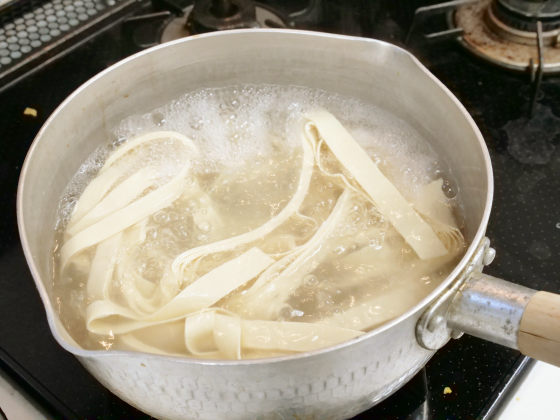
From learning tofu skin slices, we will thoroughly drain the water.
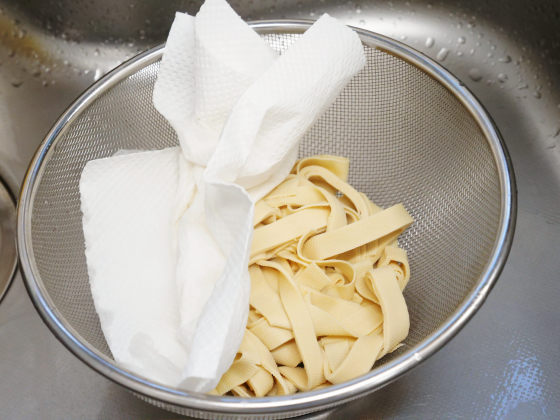
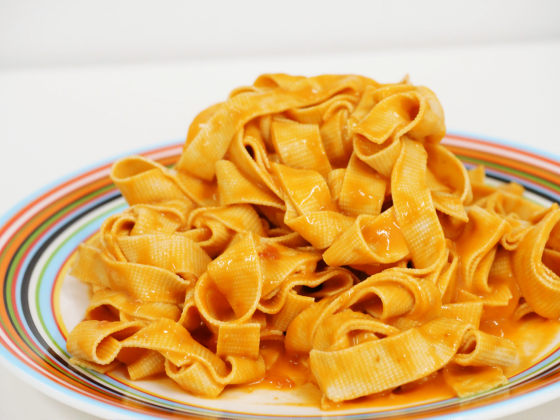
It turns out that 'the thicker it is, the farther away it is from the noodles and the closer it is to tofu.' It looks pretty Italian, but the taste is tofu and the texture is terrible, which is delicious, but it seems that the needs of those who are looking for pasta cannot be met.

So, the conclusion is that 'tofu skin is delicious, but it is different from dried tofu and has different potential as noodles.' If there is a business supermarket nearby, it is easy to obtain and the cooking method is easier than tofu drying, so ants are one of the candidates for alternative noodles. You can read more about the taste and usage of dried tofu from the following.
The potential of ultra-low-carbohydrate 'tofu-dried', which is 90% off sugar even though it can be used as noodles, was too great --GIGAZINE
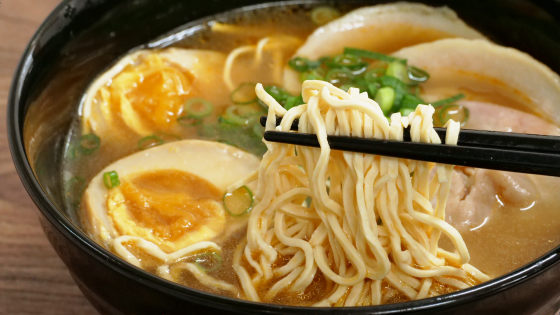
Related Posts:
in Tasting, Posted by darkhorse_log




